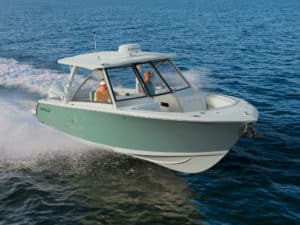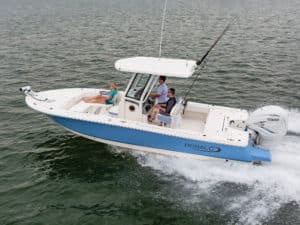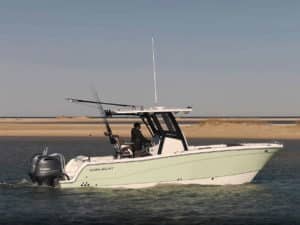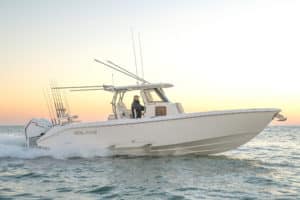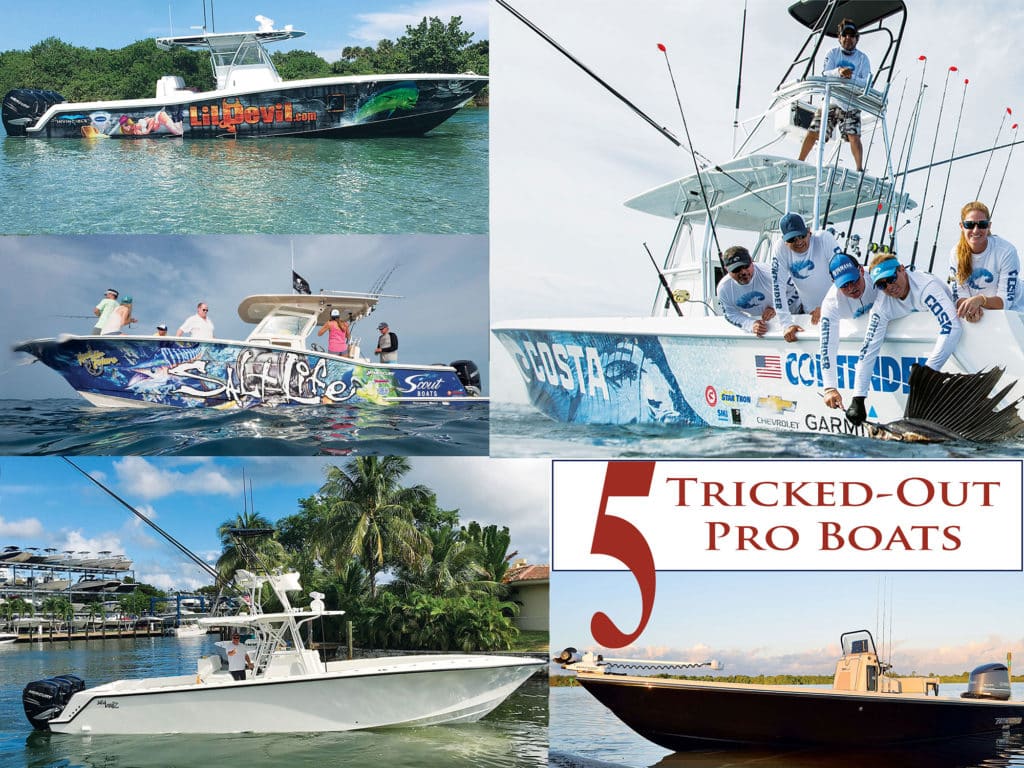
Who doesn’t like the idea of tricking out a boat so it caters to every fishing whim? I can’t think of anyone, given carte blanche with the boat of his or her dreams, who wouldn’t feel blissful at the thought of customizing a new vessel. And that’s exactly what some pro anglers do year in and year out as they negotiate sponsorships with top boatbuilders.
To find out just what kind of gear they choose, I asked five sponsored pros to talk about how they customize their rides. Many builders can completely trick out a boat at the factory. A few pros also add aftermarket touches that keep their vessels well-equipped, highly functional, and easy to sell at the end of their use cycle. (Boats are listed alphabetically by builder.)
Contender 39
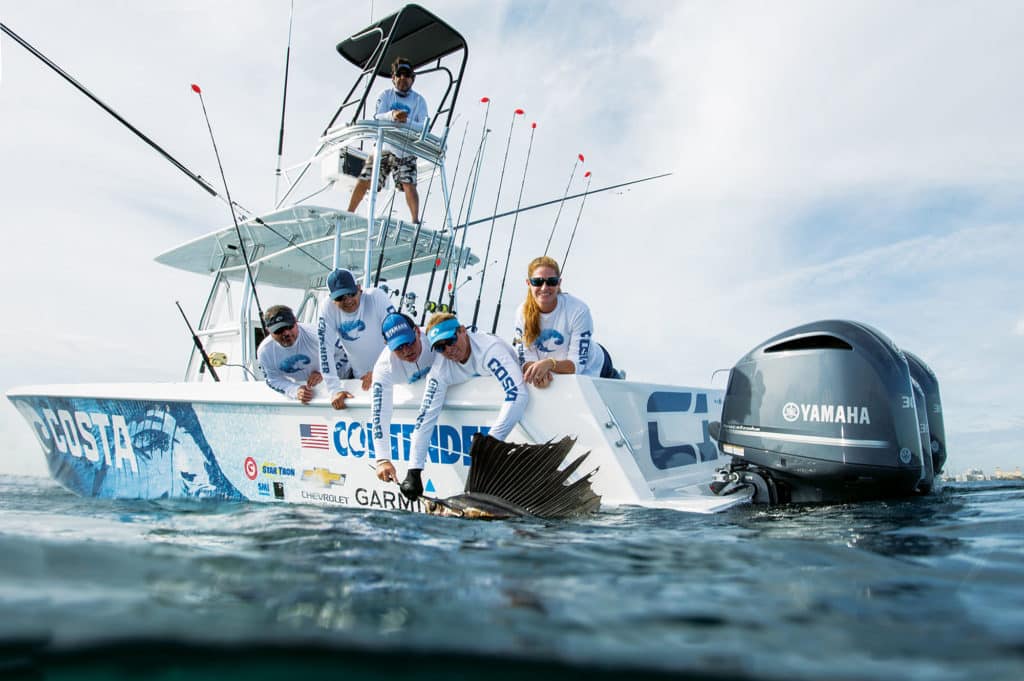
Capt. Jon Cooper of Dive-Version Charters in Homestead, Florida, competes in sailfish tournaments and guides clients for fishing and diving. He runs a Contender 39 for tournaments; for chartering, Cooper uses a 35.
His 39 sports a Contender-built second station that adds elevation for spotting tailing sails. For shade, he added a buggy top, which is blacked-out — like everything on that upper level — to minimize glare. The bottom of the canvas is black, the antennas mounted on the hardtop are black, and the console face is black.
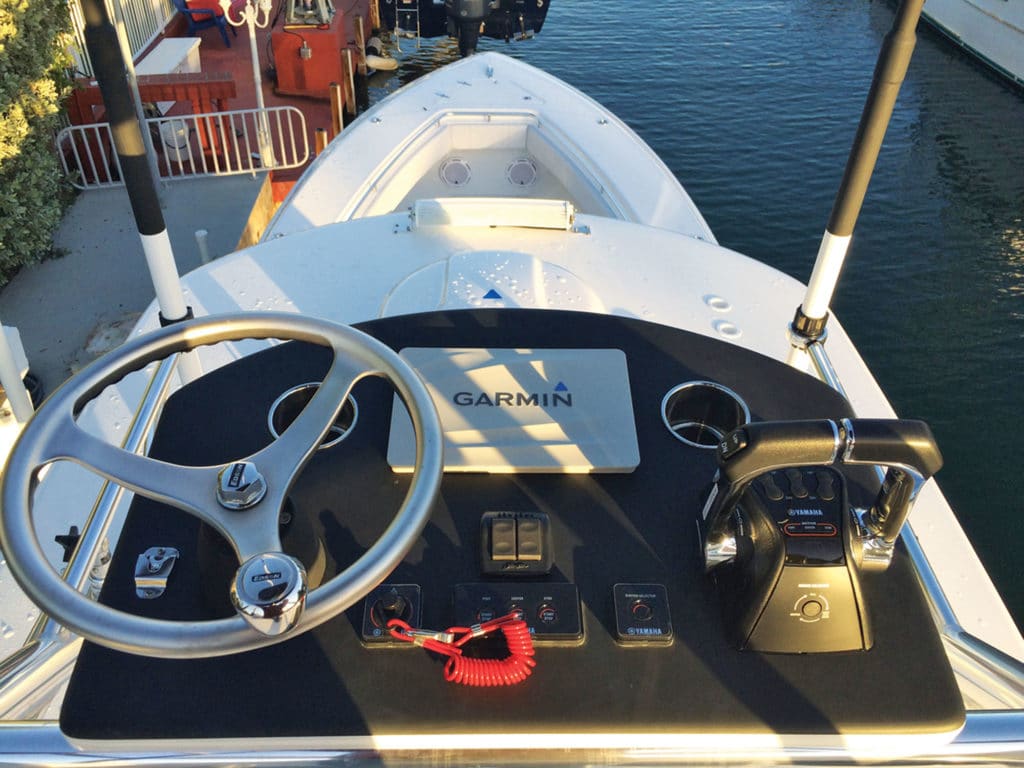
Below, on deck, this 39 is all about live bait. “We spent a lot of time and thought on the livewell process and on the sea chest,” he says of the team effort at Contender during the build. “Besides having four pumps in it, we have a manifold system. If a pump goes down, we can valve it off and redirect the water anywhere, as opposed to changing the pump at sea.”
Contender plumbed a 100-gallon floor well and two 50-gallon transom wells. But the system is capable of powering two above-deck temporary wells when Cooper has to transport bait from South Florida to a tournament upstate.
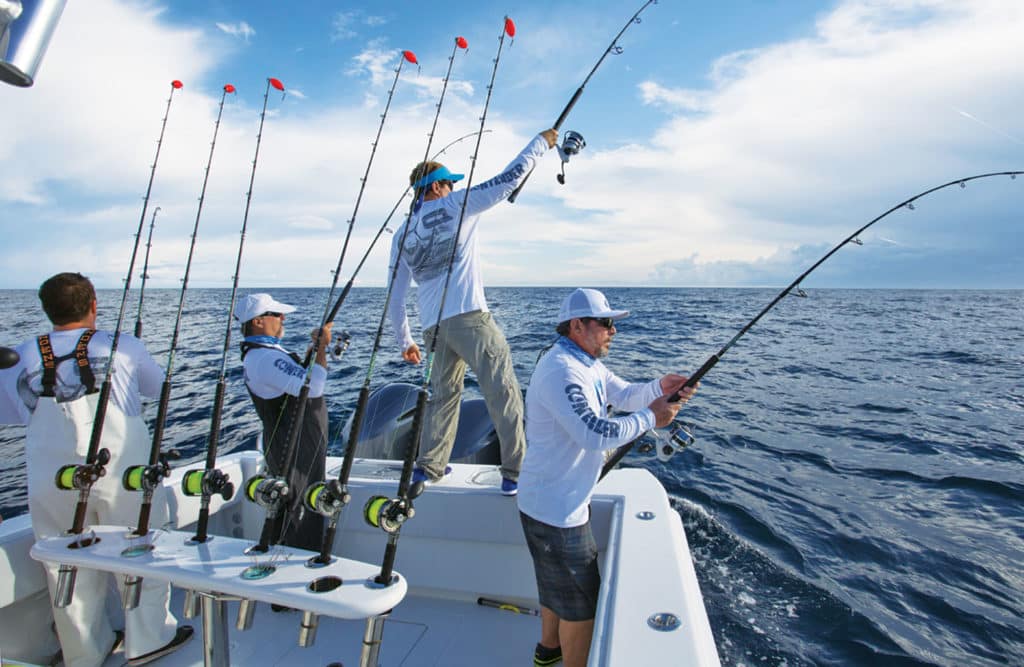
The valves that control flow to the wells have also been mounted within easy reach inside the bilge hatch. Cooper wanted them handy so he could just bend down to tweak them, keeping the wells pressurized while minimizing overflow.
The 39 also comes with a six-rod rocket launcher and specially positioned gunwale rod holders for kite rods. The kite-rod holders are angled at 45 degrees and point directly at the tip of the boat’s deployed outrigger poles. Cooper runs the kite line through a stainless ring on the outrigger halyard.
Invincible 39
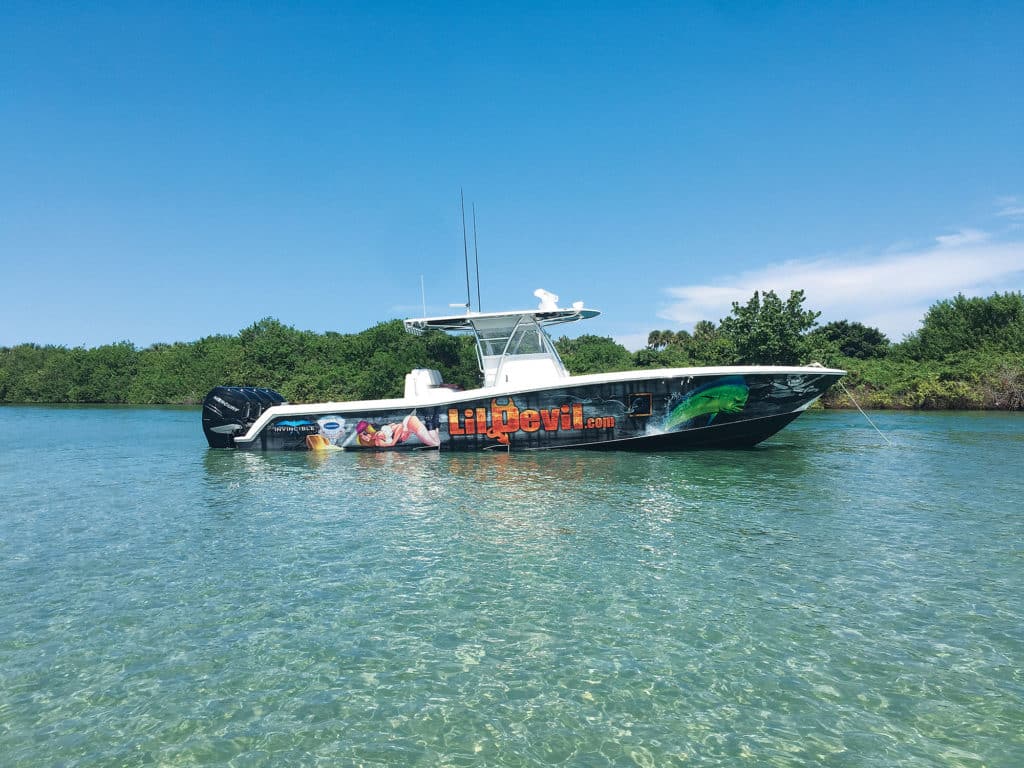
Michael Jacquin competes in Southern Kingfish Association tournaments from his Invincible 39 out of Fort Pierce, Florida. He has added some finishing touches that facilitate his specialized fishing, including a six-rod rocket launcher aft of the livewell and seven more holders on two custom-crafted aluminum pillars, which extend from the hardtop to the deck on each side of the leaning post.
“With a lot of tournament fishing we do, when we leave out, we have long runs. The best ride in a boat is at the stern. You can’t put your rods up in the T-top, so we put them all in the stern area and strap them down,” Jacquin says, explaining the reason for the aft rocket launcher.
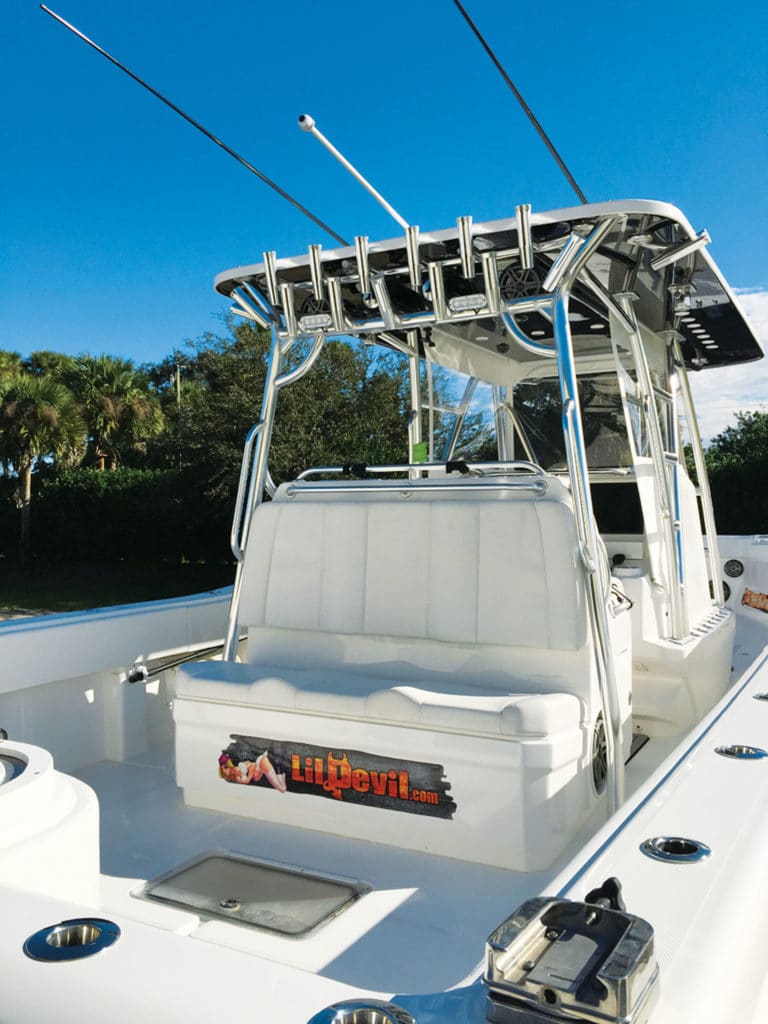
The additional holders on the posts complement the six in the hardtop, helping the crew organize gear and clear the cockpit.
Jacquin also designed his own livewell top that funnels any overflow water to the splashwell. He uses two pieces of ¾-inch plastic cut to a pattern and slides them in and out of a channel he makes atop the well. That creates an air space aft, so when the water rises to fully pressurize the well while the boat is running, any excess flows out of the back instead of splashing into the cockpit.
One innovation that Jacquin uses that’s not quite as intricate: a prop holder for trailering. With a bit of bungee cord and rope, he secures the props to the engines’ lower units so they don’t spin, which he describes as a pet peeve.
Pathfinder 2400 TRS
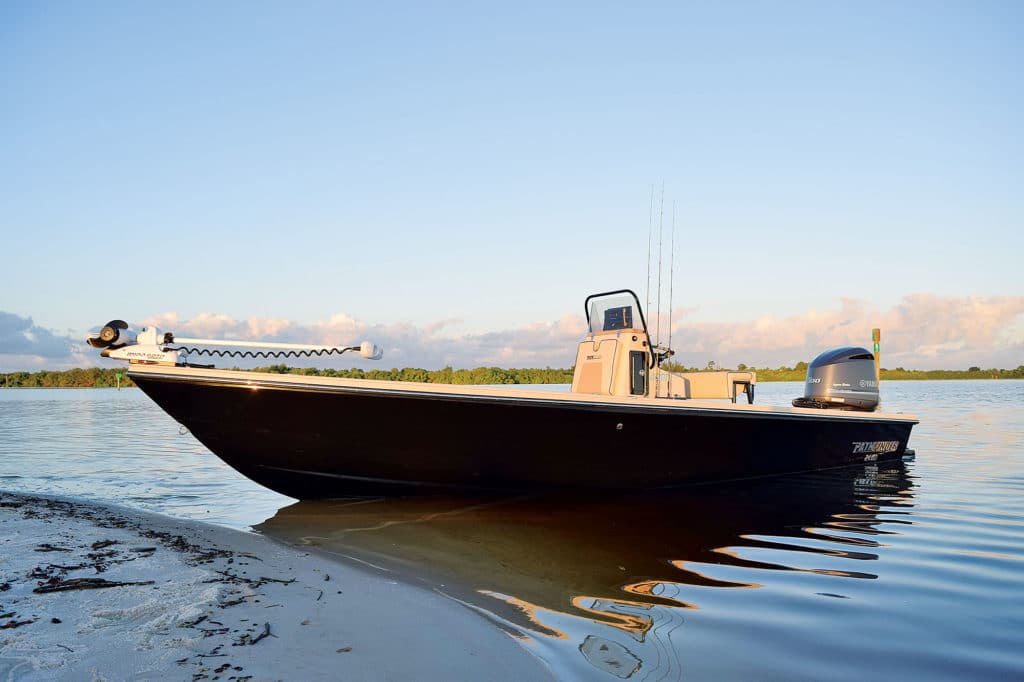
Capt. Jay Withers uses his tricked-out black-hulled Pathfinder 2400 TRS for inshore charters in Charlotte Harbor and Boca Grande. He says one of the most important tools aboard is a 112-pound-thrust, 36-volt Minn Kota i-Pilot trolling motor with the Spot-Lock feature.
“I use it a bunch,” he says. “You can get away with an 80-pound-thrust motor, but I like the additional thrust. I’ve got three batteries for it so I can run it all day. In fact, I’ve run it two days without a charge.”
Withers asked Pathfinder to rig the boat at the factory so he can actually get a jump off one of the trolling-motor batteries should his starting battery ever fail to fire up his Yamaha F300.
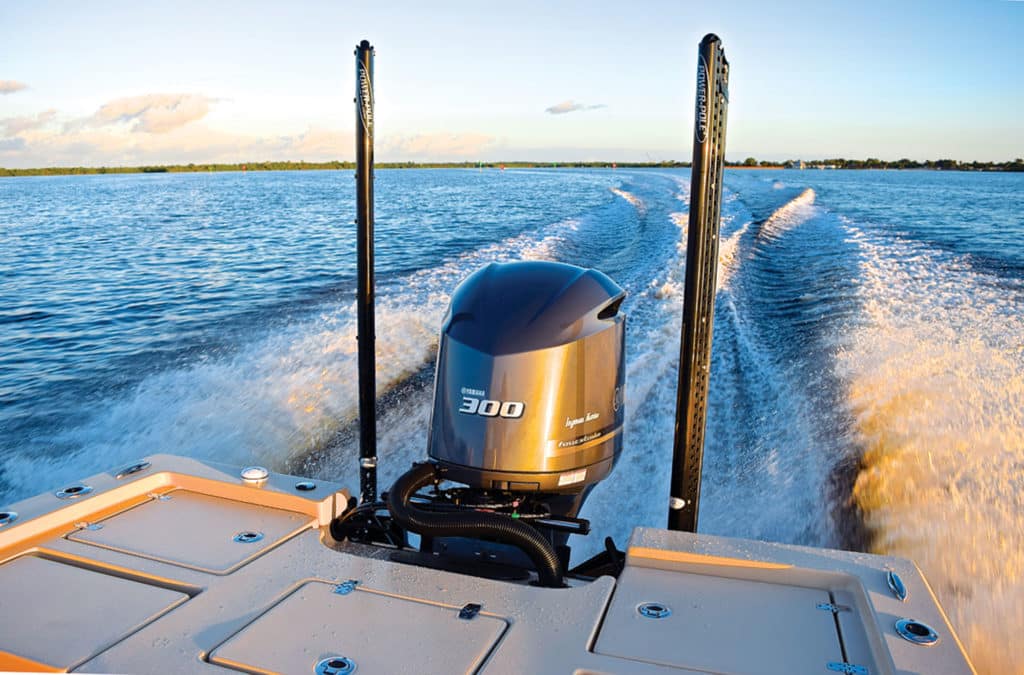
He also likes to mount twin 10-foot Blade Power-Poles with adjustable speed control on the transom. He installs one set of remote controls on the console so when he’s coming into the dock, he can shut down and stab down quickly. The second one he keeps on a lanyard at his hip.
Aside from those specific setups, Withers’ Pathfinder features numerous smaller tweaks, such as a bubbler on his 45-gallon center livewell. Built into the cast-net locker behind the leaning post, the bubbler system can attach to an oxygen tank in hot months to enliven baits.
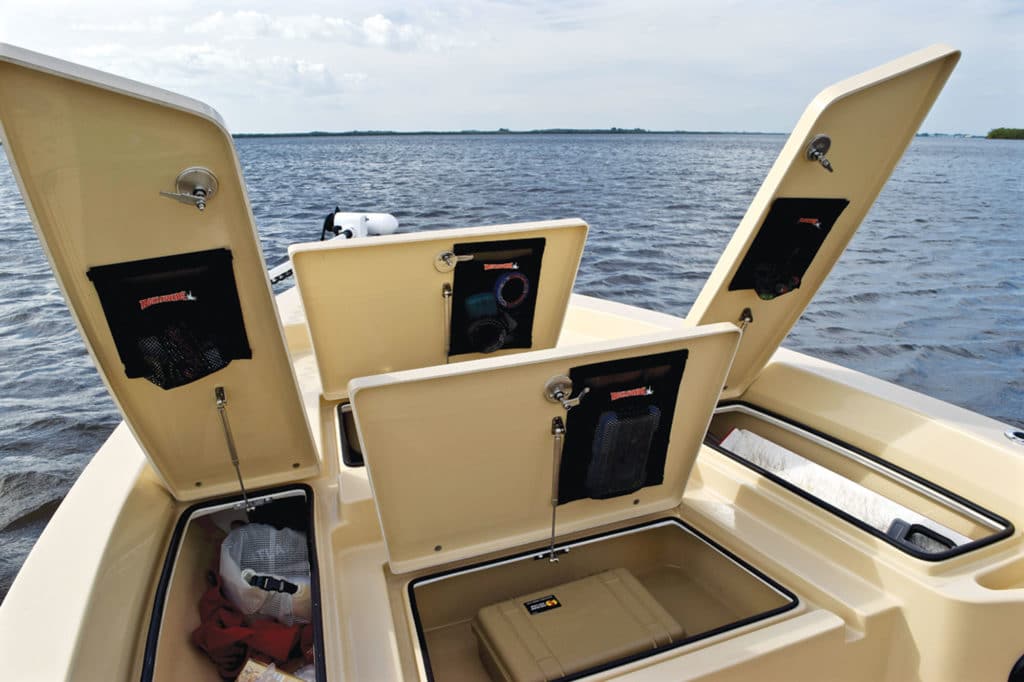
Withers also installed OceanGrip deck pads throughout his boat. Undergunwale pads protect reels when the rods are stowed, and bolster pads provide a nice kneecap buffer. In out-of-the-way places throughout the bay boat, he mounts TackleWebs for small-item storage.
All the way aft, atop the transom bulkhead, he placed a Humminbird GPS heading sensor for more accurate GPS position fixes. “If you’re sitting in the Gulf and the boat’s facing east, that doesn’t necessarily mean that’s where you’re going,” he explains. “The heading sensor is going to read the currents and tell you exactly where you’re headed.”
Scout 320 LXF
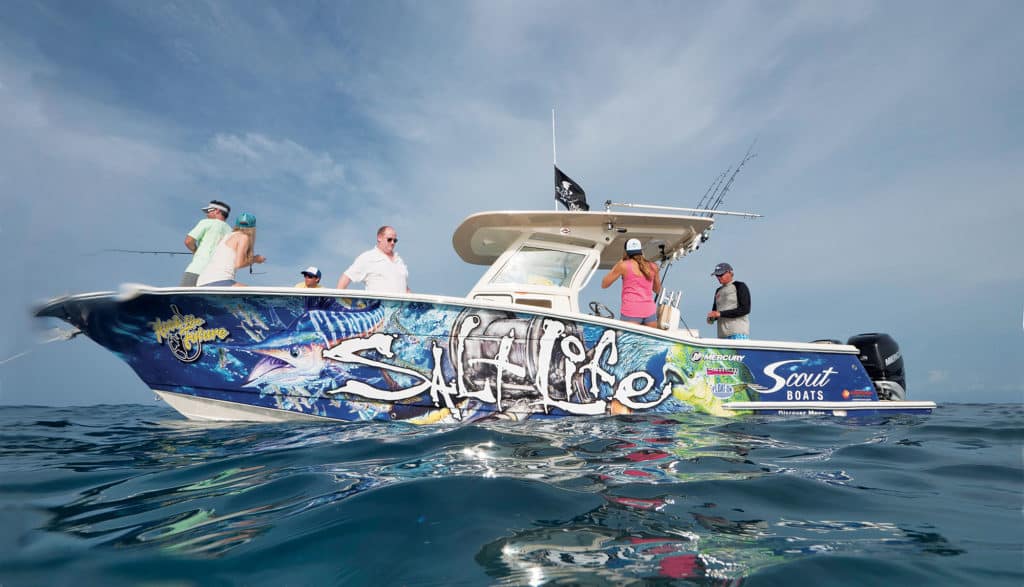
Hook the Future TV host Don Dingman says he has been spoiled by the finishing touches Scout offers on his 320 LXF, such as Mercury’s Joystick Piloting with its Skyhook digital anchor.
“That’s the most innovative thing I have. You push a button and it stops the boat — are you kidding me?” says Dingman, who runs twin 300 Verados. “If I’m in 160 feet of water and I want to see if there are some scamp there, I don’t have to drop the anchor to see.”
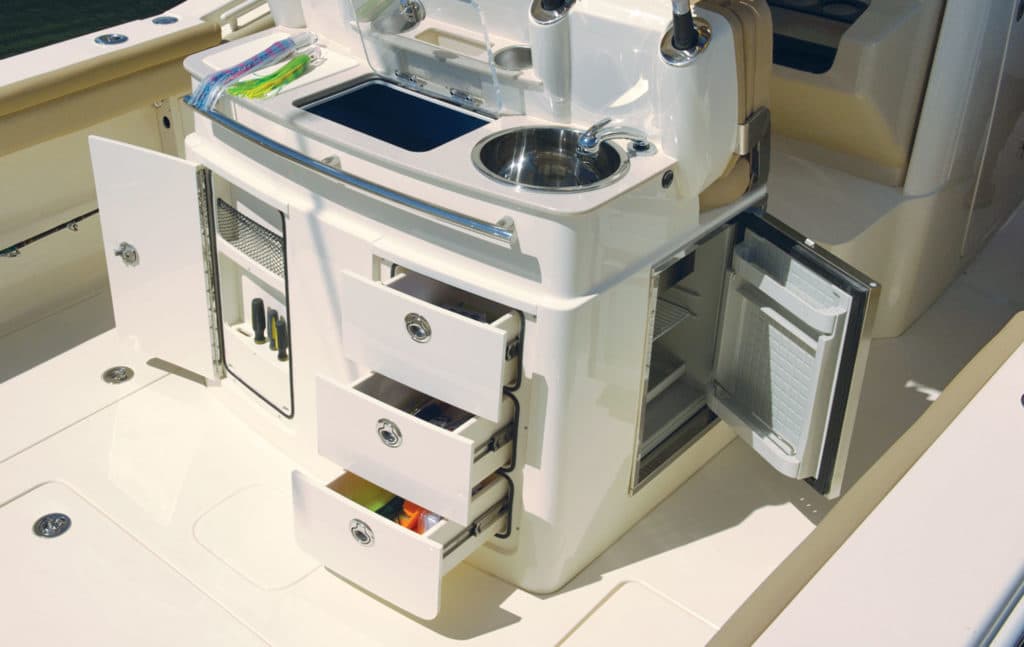
Dingman’s 320 also comes with a windlass and a refrigerator on board — items he never knew he “needed” until he had them. The windlass makes retrieving an anchor nearly effortless, particularly for single-handed trips with guests and a film crew. “I have a refrigerator on this boat,” he says. Believe it or not, “I like that option. The sandwiches stay crispy and not mushy.”
Small comforts sometimes mean a lot offshore. Dingman says he works with Scout to dial in his boats at the factory because he turns them over to sale fairly regularly. For that reason, he uses SeaSucker vacuum mounts for any extra conveniences he feels he needs.
SeaVee 370Z
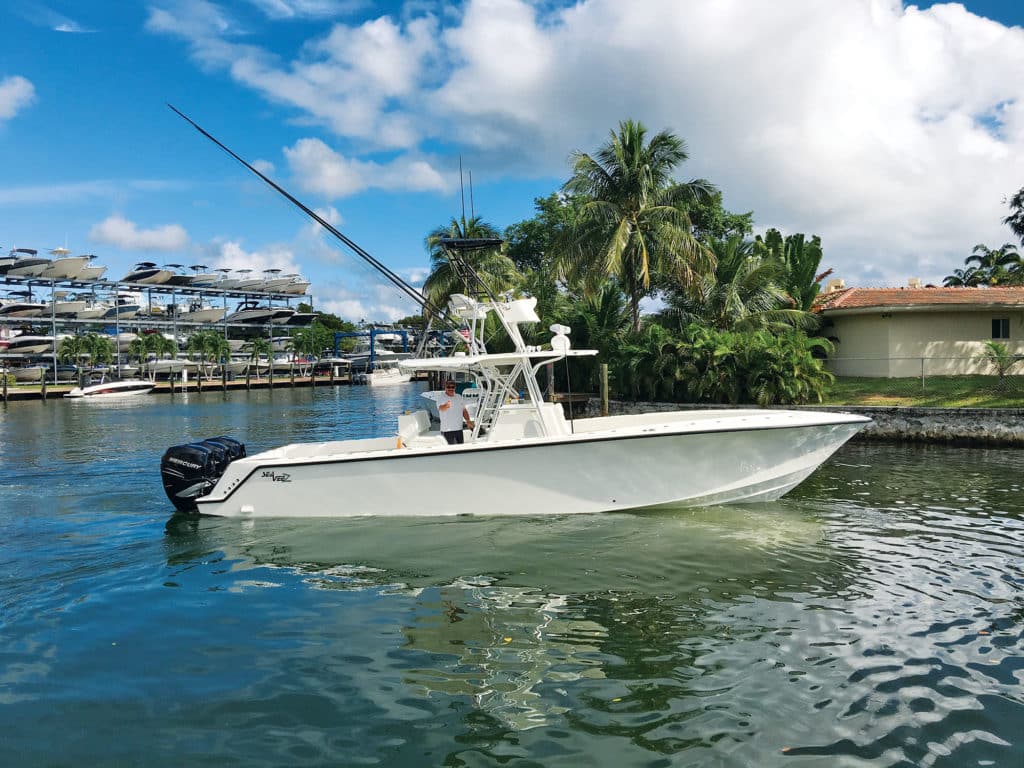
“The first thing that stands out on my SeaVee 370Z is the number of rod holders,” says Capt. Dean Panos. “I have 20 right now per side, and people see them and say, ‘Wow!’
“But when we tournament fish, we’re putting out three kites. That’s a total of 12 rods. This allows you to move the rods up and down depending on which way we drift.”
Panos customized the assortment a bit. Where the gunwale widens, he alternates 15- and 30-degree angled holders. He can move bent-butt rods to the 15-degree holders and keep their tips out of the water.
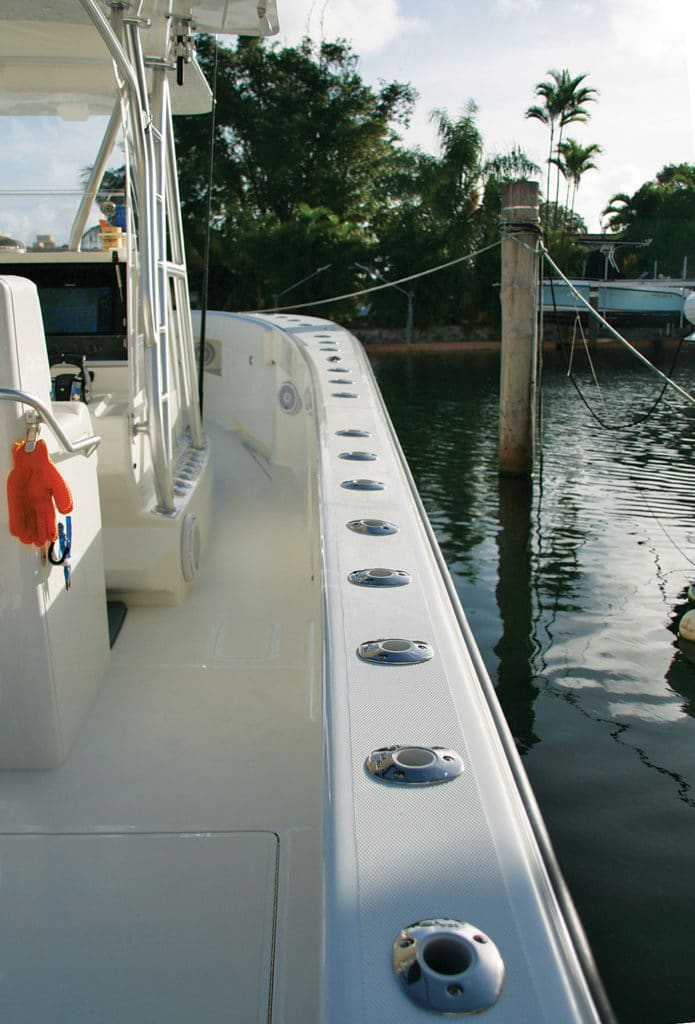
To the normal five-rod rocket launcher on the leaning post, he added a sixth holder so he can fly an entire spread without a mate.
When he takes clients out to deep-drop, the gear can put an enormous amount of stress on the rod holders and surrounding fiberglass. Panos asked SeaVee to glass in a ¼-inch aluminum plate under the rocket launcher to add rigidity.
To battle the extreme South Florida sun, Panos blacked out the console face to reduce glare. He also took that approach to the second station, where everything from the steering wheel up — including pipes, canvas and riggers — is all black.

